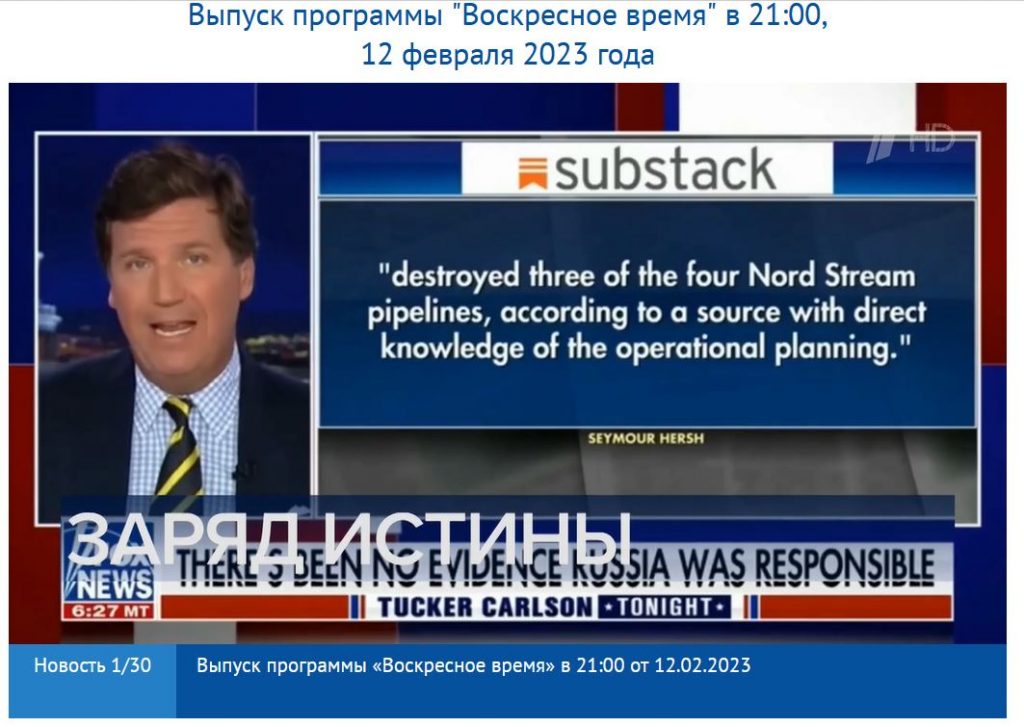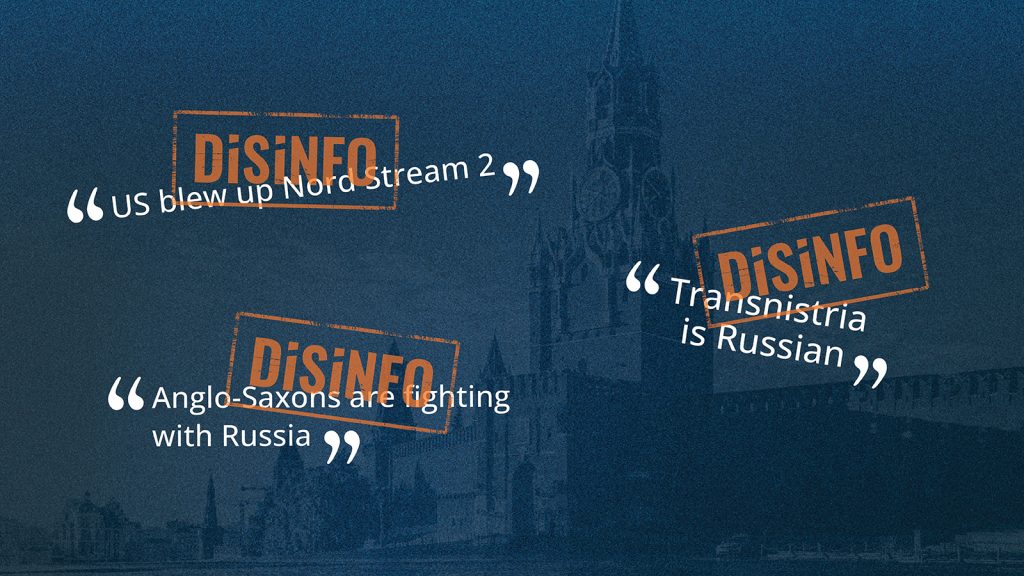Last week, the pro-Kremlin information manipulation ecosystem spewed a mixture of old narratives, tactics making repeat appearances and opportunistic attempts to dismiss, distort, distract, and dismiss.
A dubious whodunit handed to the Kremlin on a silver platter
On 8 February, reporter Seymour Hersh self-published an article alleging that the US and Norway were behind the sabotage of the two Nord Stream pipelines last year. The problem with Hersh’s story is that his central claim relies on a single anonymous source claiming expert knowledge of all aspects of the matter. This one source supposedly knew about everything, including strategic political considerations, management of aircraft and helicopter operations, complex NATO exercises, and specialised explosives.
A number of factcheckers have already pointed to flaws in Hersh’s theory. Hersh’s recent work has been controversial and widely panned by journalists for promoting conspiratorial claims that hinge on dubious anonymous sources or pure speculation.
The White House dismissed Hersh’s report as ‘utterly false and complete fiction.’ Similarly, the Norwegian Ministry of Foreign Affairs called the allegations ‘nonsense.’
Naturally, Hersh’s story meant a field day for the pro-Kremlin information manipulation ecosystem. The story received high attention from the Kremlin. The prime time Russian state TV news programme, an agitprop beacon, dedicated a long report to the story on Sunday 12 February.

On Telegram, Russian disinformation actors almost certainly coordinated promoting the self-published article automatically, as a large amount of near-identical messages were distributed in just seconds by both Russian state-controlled outlets (e.g. here) and outlets known to be interacting with the Russian disinformation ecosystem (e.g. here and here). Within an hour, at least 176 channels had posted messages related to the publication, amounting to 22 million views altogether.
Trouble brewing just west of the main theatre
Last Friday, Moldova’s government collapsed and its pro-EU prime minister stepped down. On Monday, Moldova’s President Maia Sandu, drawing upon Moldovan and Ukrainian intelligence sources, exposed a Russian plan to topple the government. Kremlin disinformation outlets responded swiftly to the announcement, claiming that the supposed coup attempt was a plot by the US Department of State and Ukrainian President Volodymyr Zelenskyy to escalate the situation around Transnistria and to drag Russia into a direct confrontation with the collective West.
News Front, an outlet directed by Russia’s federal security service, or FSB, did not let a good opportunity slip. The outlet joined the choir, claiming that Transnistria is Russian to begin with and labelling the region as the first republic of Novorossia.

These misleading claims fit within a broader pro-Kremlin disinformation narrative targeting Moldova and trying to undermine its sovereignty. Pro-Kremlin outlets clearly consider Moldova part of a Russian zone of influence. They routinely accuse the current pro-European authorities of Moldova of making people’s lives worse because of their refusal to ask Russia for better gas prices and also for supporting Ukraine in Russia’s war.
Ukraine still taking most of the heat
Targeting the US and Moldova did not mean that Ukraine received no attention. On the contrary.
The worn-out narrative of Ukraine’s supposed use of chemical weapons re-emerged. Outlets claimed that Kyiv used them in combat around the cities of Bakhmut and Vuhledar. They provided no evidence. Pro-Kremlin outlets continue repeating such baseless allegations as established facts while introducing minor variations.
Pro-Kremlin outlets also tried another angle, alleging that Kyiv is massively recruiting ethnic Hungarians into the army and exterminating the Hungarian language. This mix of disinformation claims is aimed at undermining Ukrainian-Hungarian relations and Ukraine’s reputation as a country abiding by international standards.
No factual evidence supports the claim that ethnic Hungarians are being drafted into the Ukrainian army. Neither have the Hungarian authorities made reference to genocide or ethnic cleansing in this regard. Assertions about the forceful introduction of the Ukrainian language and the extermination of the Hungarian language in the Zakarpattya region are likewise false.
As often occurs, these claims are mere shells of lies, filled with nothing but air. Russia cannot explain away the atrocities they are committing in Ukraine, so they keep trying to distract international audiences by resorting to whataboutism and flooding the information environment, among other tactics.
Other disinformation cases of the week:
- The Spanish-language Sputnik outlet distorted the words of German Chancellor Olaf Scholz, claiming that he said that demands to supply military planes and submarines to Ukraine undermine unity among NATO members. This supposed statement would allow one to believe that he is against further arming Ukraine. In fact, his message was exactly the opposite: ‘From the first day of the war our strongest characteristic lies in our cohesion. We will simply not allow a country to invade another and disrupt peace in Europe.’
- Baltnews claimed that the Baltic states, Poland, and the UK support racial discrimination against Russia’s athletes at Olympic games. Calls not to allow athletes from Russia and Belarus to participate in international sports events are a direct result of Russia’s unprovoked war against Ukraine. It is in that context that the Executive Board of the International Olympic Committee on 28 February 2022 issued a recommendation that International Sports Federations and sports events organisers should ‘not invite or allow the participation of Russian and Belarusian athletes and officials in international competitions.’





